Alright – so today we’ve got the honor of introducing you to Laura Spector. We think you’ll enjoy our conversation, we’ve shared it below.
Laura, appreciate you joining us today. Can you talk to us about a project that’s meant a lot to you?
Museum Anatomy is the title of the most meaningful project I’ve worked on. I am interested in the history of unseen, stolen, and destroyed paintings. I think of history as a giant tapestry and when an artwork used as a piece of documentation of time goes missing its as if a stitch has been disrupted, creating an aberration in how we understand history. When a painting is stolen there are five parts to the story: The model, the painter, the painting, the collector, and the thief. This means that each stolen painting represents a novella of information of how our history has been disheveled while creating an entirely new journey all because one painting was created. I often like to think about the lives paintings have after they’ve been stolen.
Most recently, I’ve been focusing my attention on artwork that has been destroyed or stolen during wartime. This topic has always interested me. I remember hearing about entire belfry towers in Berlin filled with paintings for “safe storage” that were bombed by friendly fire because pilots were not allowed to return with their payloads. This meant dropping bombs wherever pilots saw fit and sadly this often led to the destruction of important works of art.
I love reinterpreting these lost works of art on my own timeline. This means that I work with whatever current technologies I have available at the time I’m creating my art. When I first started the project in 1995, architectural plotter printers were the cool new toy. I used them to print out 2-dimensional frames for my photos of paintings on the body. When standing away from these works everything would appear 3-dimensional and look like the original work of art. In one instance, I remember a curator at Berkeley Art Museum asking why “all this old work is still on the wall?”, not realizing the series of artwork was completely an illusion that worked!
Museum Anatomy only becomes more meaningful for me with time. With the war in Ukraine, I can’t help but think about all the works of art that didn’t make it out of war zones in time. It’s unbelievable that this is how humans operate in 2022. There are so many works that have been stolen and will disappear for decades, centuries, or will never be found again. War erases history and truth.
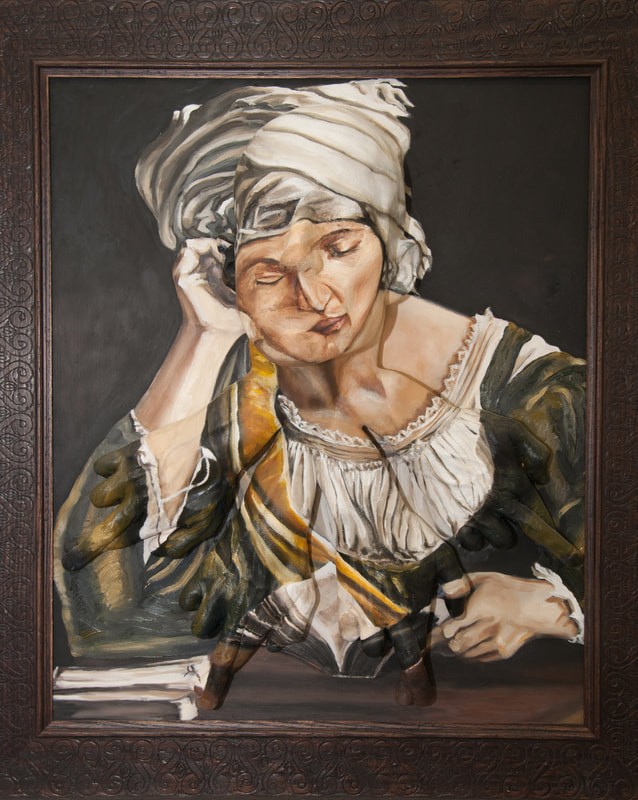
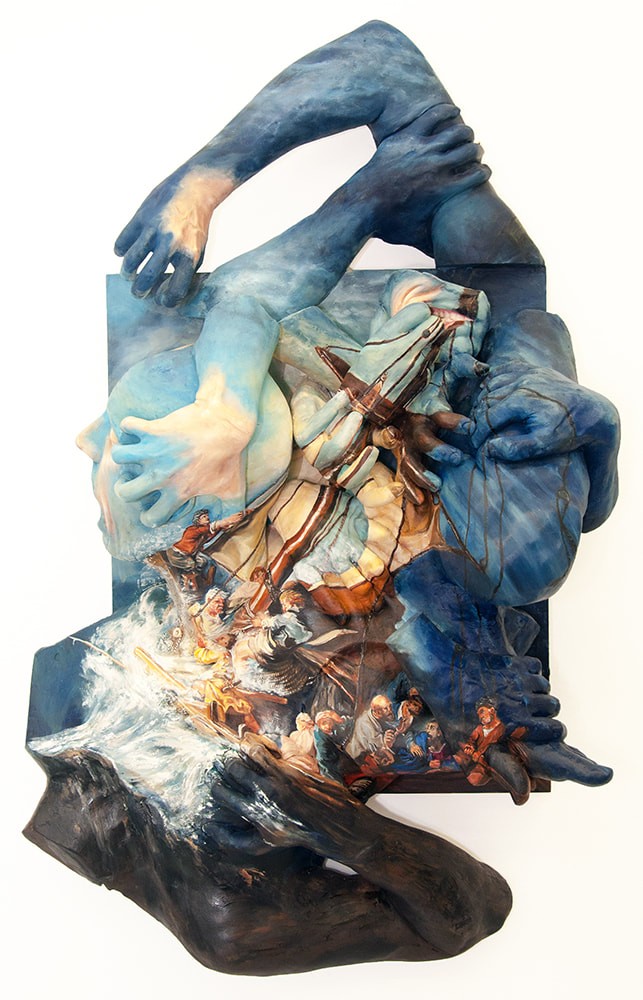
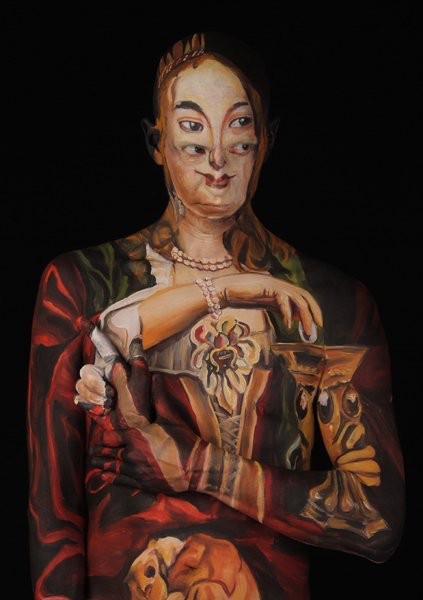
As always, we appreciate you sharing your insights and we’ve got a few more questions for you, but before we get to all of that can you take a minute to introduce yourself and give our readers some of your back background and context?
When I left high school I thought I wanted to go into theatre. I was obsessed with Robert Wilson’s stage design. As chance would have it, I took a tour around a sculpture department and fell in love with art making. I had a friend help me forge a portfolio and I learned how to kind of “draw on-the-fly”. The head of the university art program probably figured I’d drop out in the first semester if he let me into the Art Foundation program.. I wouldn’t tell that part of the story if I didn’t follow up and say that I was invited to come back and lecture to the undergraduate class five years later about my artwork even though I never graduated.
I was about 6 months away from completing university when I got a call from New York City to come up and apprentice with a production company representing Philip Glass. (They didn’t call out of the blue. I had been writing them with nagging hand-written letters asking if they’d let me work with Robert Wilson.) I left school thinking my career would be made. Ultimately, it cost me a lot of money in a time when apprenticeships were not really popular. After a few months of work I was asked to be a Production Manager for a tour of Glass’s Solo Piano. I was so young and so excited! While I was on tour with Philip, we sat outside of the museum before one of those tuna fish luncheons museums like to throw and Philip asked me what I wanted to do with my life. I told him I wanted to make art. He encouraged me to go make art immediately or I’d still be working for him when I was 60. . I quit my job the following Monday.
After two years in California, where I exhibited at the UC Berkeley Master’s Thesis Exhibition without being a student (that’s a much longer story), I continued my Museum Anatomy artwork with the help of curators in Prague, Madrid, Palermo, London, Athens, and Johannesburg before moving back to New York City. Two weeks after 9/11, I traveled to Bangkok to work with a museum and ended up in Chiang Mai, Thailand for 10 years.
I never had a travel grant to do any of this work. Without an undergraduate degree I wasn’t eligible to apply for many grants at all. Oftentimes people assume I was rich, or my parents were helping me out. This couldn’t be further from the truth. There were times were I’d be splitting a $1 slice of pizza for dinner and wondering how I’d be able to make money for my next meal.
When I was in Prague, I found an English expat phone book and called each number in order to pitch murals. I got a few gigs this way, including a mural at the restaurant Red, Hot & Blues, and an investment company owned by a Navy Seal. In London, I was hired to do body painting at corporate gigs which sometimes paid and sometimes chose not to pay. I had a very intensive job in publicity in New York City where I was often at celebrity events and fancy parties. It sounds kind of glamorous, but the workload gave my replacement shingles. The ways I weaved together money was not romantic, but makes for fun party stories that often are asked to be followed up with photographic proof. At times, being broke was dangerous, especially while being in foreign countries. I guess it built character and expanded my skill set and communication abilities out of necessity. You can’t really be a wall flower and survive day-to-day. I came out of all of this fairly certain that if anyone learns vocabulary of any job they can likely “fake it until they learn it”, with exceptions of flying or surgery. In London, I busked for a few months and made more money in coins than I have possible ever made at any other job I’ve had in my life. I rolled a very heavy suitcase of coins into Lloyds’s Bank to ask if they’d turn it into cash. They didn’t want to take any coins until I told them how many I had and that they may want their reserve back. Reluctantly, they complied while gathering their staff to take a look.
While in Thailand, I found a studio at an old ice cream factory where I could make art.. I was hired to create a miniature golf course based on plans from an architecture firm in Amsterdam. I led a crew of 5 people (only 1 spoke English) and we created a gorgeous putt putt with an 18-hole “around the world” theme in under six months and under budget. It was quite a feat – especially working with a crew that had never heard of using a level for concrete! The golf course included 60 sculptures and 150 feet of mural space that could all be removed and relocated. After that project, I opened a painting school. My school expanded into a second location in Chiang Mai and I added a community arts space with a stage and ArtSpace Chiang Mai was born! I loved that business! But, after the second coup in Thailand, I was ready to come back to the US and sold my business. I relocated to Houston and continued teaching art with a bunch of side gigs, including photographing 500 doctors for a corporate website, and a bunch of other odd jobs in the visual arts field to get settled back into the grind of American living. If a job is named, I have likely or can likely do it (except for flying or surgery, though I have a great interest in both). Aside from making art, I continue to be focused on teaching drawing and painting to adults and have accumulated about 25 years of experience doing so. Since I teach online, my students span three continents and six states. On the side, I still make commissioned paintings (lots of pets!), paint murals, and sometimes take on very strange sculpture opportunities. The stranger the better. I love making elements for movies – whether paintings or little sculptures. Those are fun opportunities.
When people tell me their kids are going into art-making…I think…”Oh, boy! That’ll be GREAT!” Seriously, it’s more work and commitment than most professions. Of all the students I personally knew who graduated art from university, undergrad or Master’s, I’m the only one I know still making art professionally. The absolute best part of being a visual artist is the time spent alone with flow in the studio. There’s nothing like it. It’s not glamorous or witnessed, but it is extraordinary or none of us artists would continue to make art.
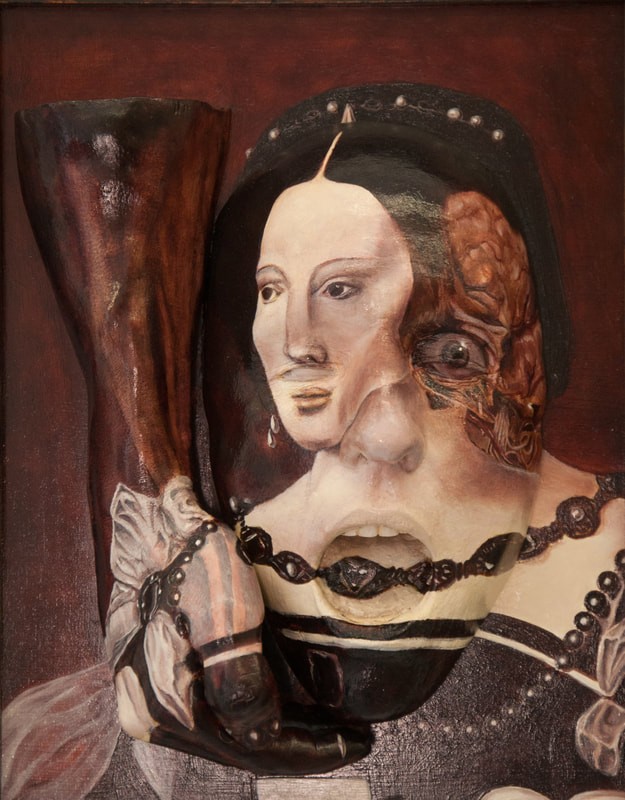
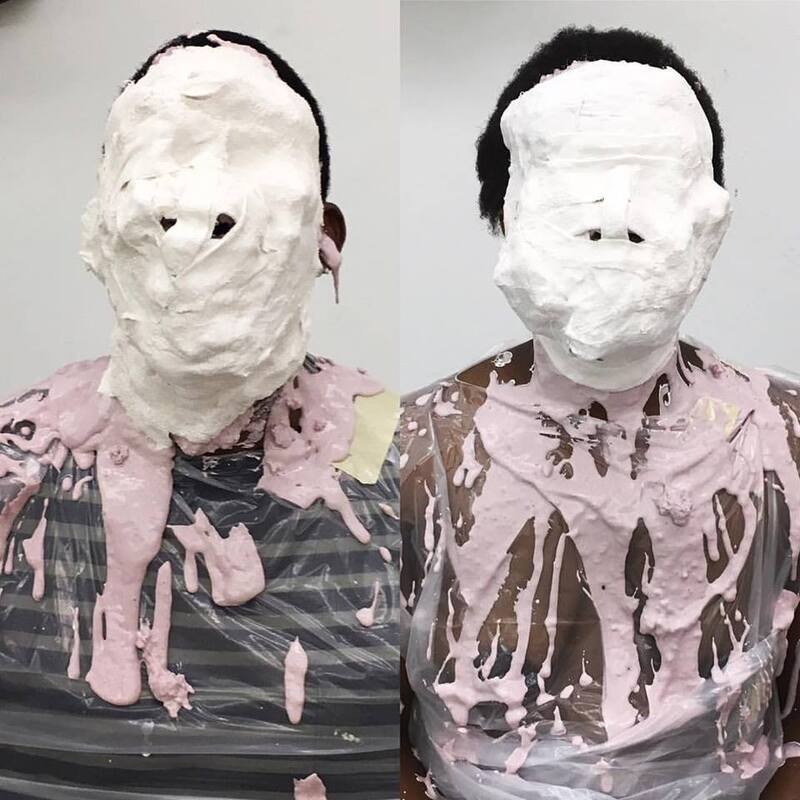
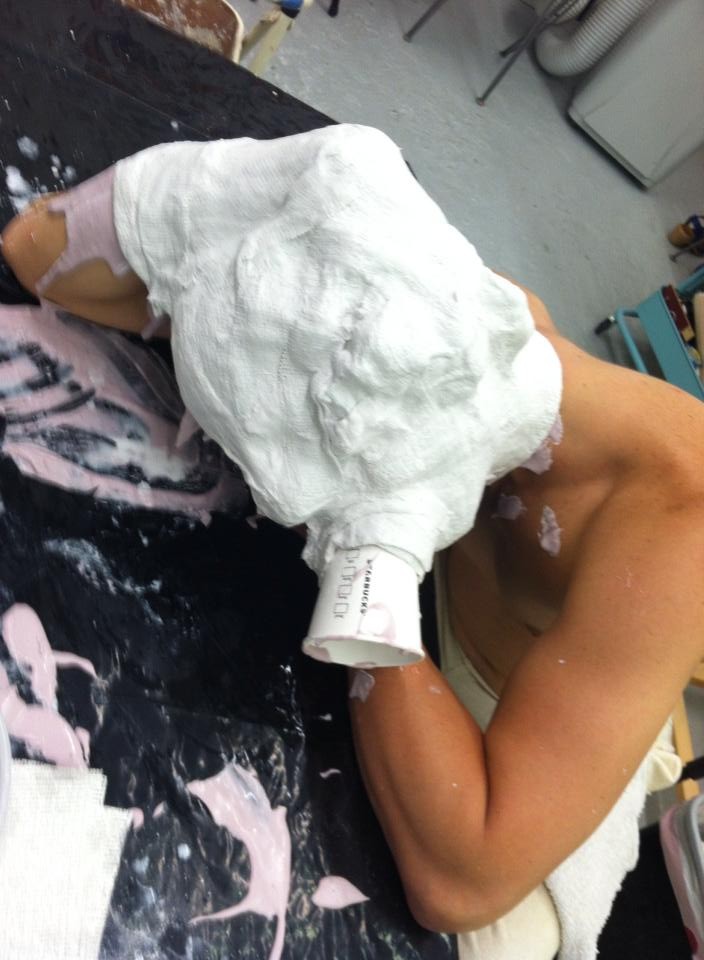
In your view, what can society to do to best support artists, creatives and a thriving creative ecosystem?
If you like a project, fund it. Ask about it. Share it. Buy a work of art and hang it prominently so others can see it. Ask curators to show work you love. Write your museum and tell them you want to see a specific work of art or artist hung in their museum. Ask art board members to show work you want to see. Ask artists to lecture at your place of work. We’re just another sector of business waiting to be utilized. Don’t have money to buy a work of art? Offer an artist an exhibition at your next party, gathering, boardroom meeting. It’s a win-win. You get to decorate and the artist gets to show their work, meet new potential collectors, and possibly sell some work. Give gifts of original artwork. We have enough mass manufactured “things”. Artists of all ages are very open to collaboration.
While artists love commissions (especially if the commission is in their skill set), we love it even more when you invest in things we’ve already made. If we haven’t set an artwork on fire, cut it up and dumped it in a trash can it obviously has meaning for us and is still a desirable work of art despite the date that may be on the artwork. Can’t afford a painting or sculpture? Drawings are typically a more affordable investment and look very cool because so few people show them on their walls.
Hire artists and don’t buy pre-made corporate art at retail stores. Artists can pretty much make anything if they know how to draw. It’s good to remember that if you’re getting something for free it will look like it was free. Most accomplished artists are trained and have worked really hard to be able to create our craft. Craft is valuable and stands out. If you can’t find a particular type of art you want ask around by calling an artist, art league, or a friend who attends art classes. . Artists have become business people and are no longer the weird creepy person biting their nails in the corner of a room hiding behind a plastic cup of red wine. These days we can problem solve.
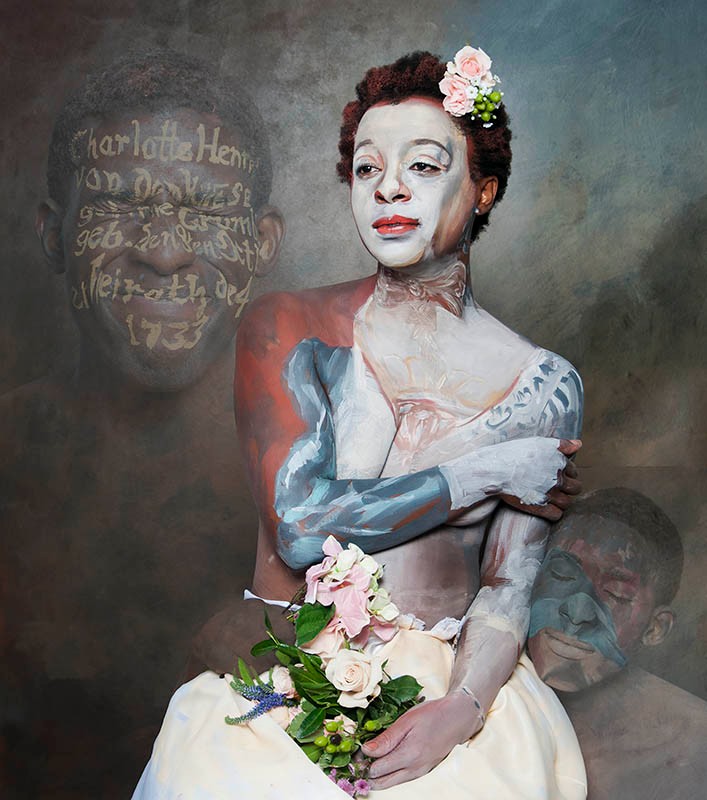

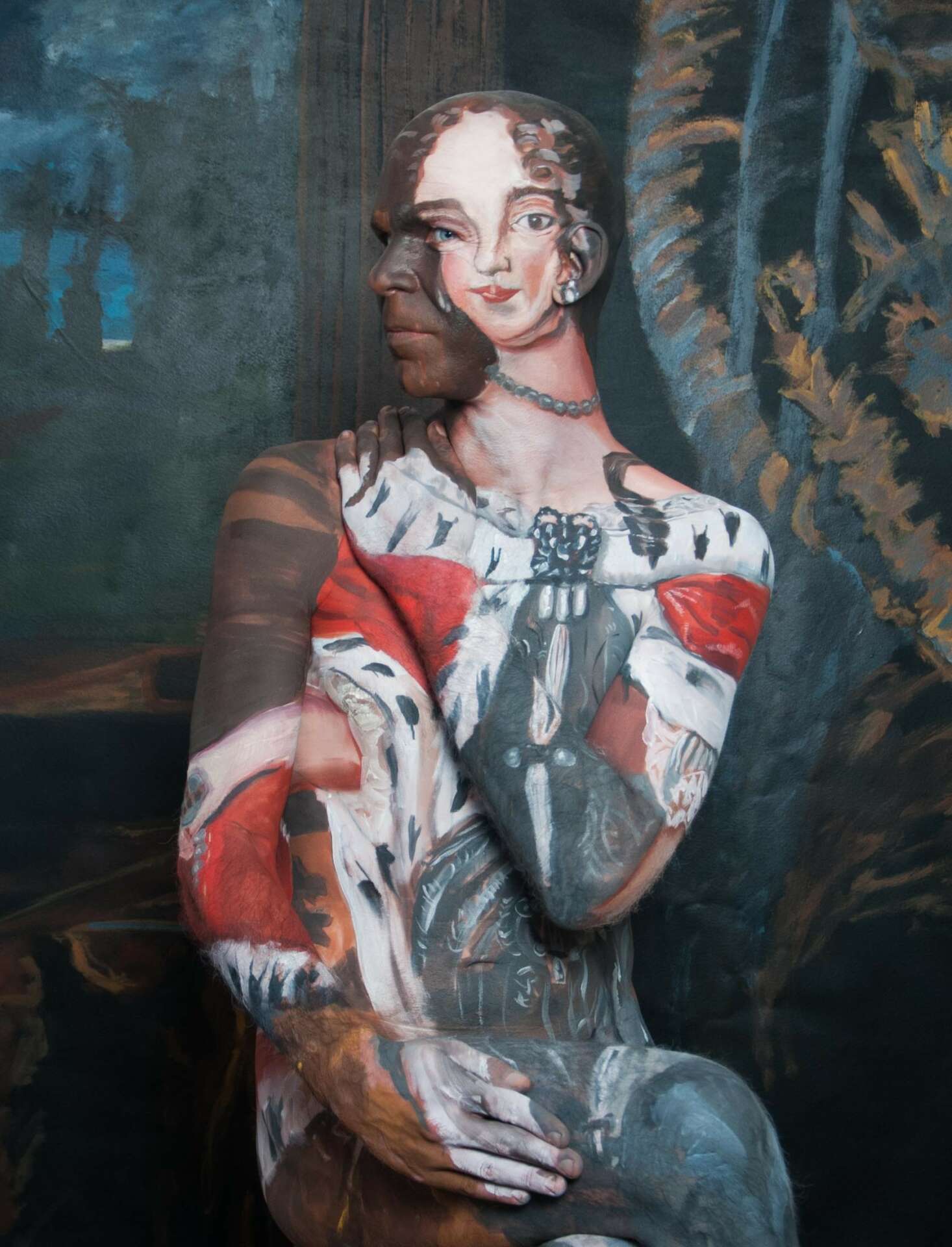
: Is there a particular goal or mission driving your creative journey?
I want a retrospect exhibition of all of my Museum Anatomy artwork. It’s ironic that I have recreated hidden, stolen, and lost artworks from 16 countries just for it to sit in storage. I know the work is really good work because little kids and cleaning crews love it.
Contact Info:
- Website: www.LauraSpector.com
- Instagram: @LauraMakesArt
- Facebook: @ChadwickAndSpector
- Linkedin: www.linkedin.com/in/lauraspector1
- Youtube: https://youtube.com/channel/UCT8DlaCZoSUfdsBXYNCvudA
- Other: @ChadwickAndSpector @SpectorArtStudio
Image Credits
Image credits: Laura Spector


